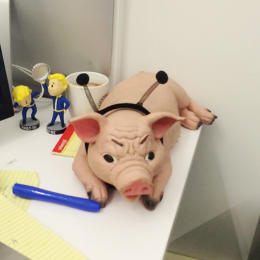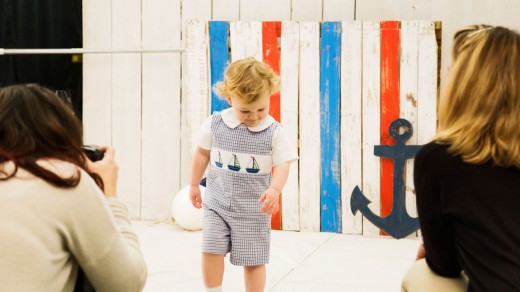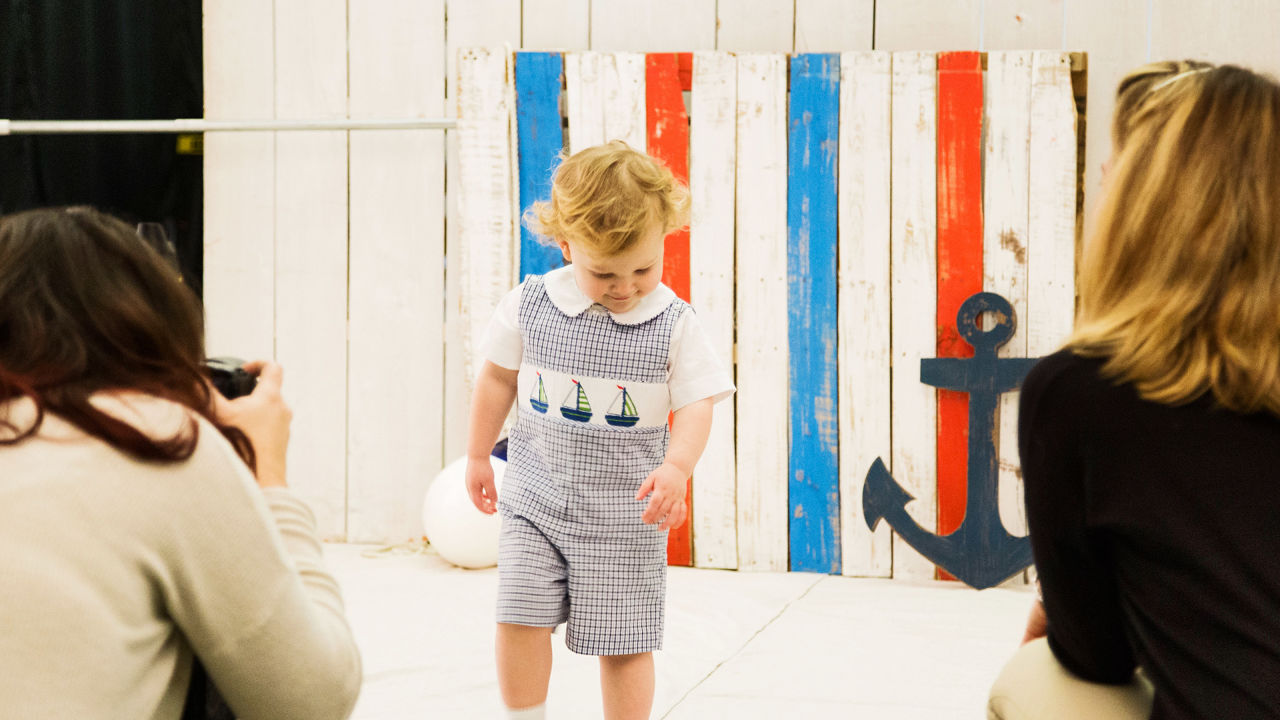The Billion-dollar E-commerce company you realize Nothing About
Zulily has defied the traditional wisdom—advertising to moms, sticking with flash gross sales, evading Amazon. Can it defy the doubting traders who suppose it may’t remaining?
February 6, 2015
On a foggy January morning at Zulily headquarters in Seattle, a menacing little lady wearing a tiara is sitting in slightly crimson wagon in one of the vital hallways. She’s throwing a tantrum, brandishing her sippy cup like a cudgel. Our eyes lock on my method back to the ready house from the restroom, and all at once I’m sucked into an impromptu staring contest, which, taking into account the home-container benefit of the competitors, i believe I’m about to lose. I avert my eyes to the paper lanterns that drip from the lofted ceilings and the carnival-sized stuffed animals, rocking horses, and playhouses that line the partitions. it is like the sector’s nicest Crate & Barrel swallowed a pediatrician’s place of business.
It’s just a little after 10 a.m., and my infant nemesis is just one of dozens of kids scattered during the labyrinthian premises. On the other facet of a tumbler wall within the ready space are as a minimum 10 photograph shoots, flickering on-and-off in refrain whereas busy-having a look twentysomethings reputedly transposed from an city Outfitters catalog zip round like pinballs. Two more tiny people wearing bright scarves and furry boots barge through the entrance, screaming on the high of their lungs as they make a beeline for the toy wall. Bob Marley & the Wailers’ “Exodus” softly knifes throughout the noise from an invisible speaker system. Sitting across from me, a blonde lady in Tory Burch flats and a black pantsuit stares unblinkingly into her iPhone, ready for her appointment, unfazed by means of the bedlam.

that is Zulily’s “fifth or sixth administrative center space” that the corporate has outgrown in its 5 years of lifestyles, in step with CEO Darrell Cavens, as if place of business space had been teensy Velcro sneakers to be thrown into the donation pile and forgotten. for those who aren’t a habitué of the mommy blog circuit, you could possibly be forgiven in case you did not recognize the company by title. but when Zulily pronounces its fourth-quarter results and 2014 income on February eleven, it will be the newest entrant within the nonetheless unique membership of e-commerce firms with greater than $1 billion in annual revenue. in fact, within the universe of all retail brands, handiest Amazon and previous Navy hit the billion-greenback earnings mark in a shorter period of time.
entering this rarified club can be spectacular beneath nearly any cases but it surely’s much more so when one considers the particulars of Zulily’s business. the corporate sells just about anything a younger mother would possibly want for her household (and herself), at on occasion steep reductions. Zulily markets its wares by way of the restricted-time merchandising methodology referred to as flash sales, a subspecies of e-commerce largely discredited in the wake of Gilt and Fab’s neatly-documented struggles. There aren’t any stars or any product-score gadget on the website, on account that merchandise disappear after three days. It incorporates no inventory, which means that that it could actually take weeks for it to satisfy orders, which is the polar reverse of the rest of the industry’s push towards on-demand near-rapid gratification. Returns are nonexistent or extraordinarily troublesome to obtain. And it operates within the literal shadow of Amazon and the metaphorical considered one of the big apple and Silicon Valley-based totally e-commerce startups that have commanded far extra hype.
Zulily went public in November 2013, and after a surge that noticed it skyrocket to a $7 billion market cap in February 2014, skeptics have pushed down its stock price to its lowest level as a public-traded firm. it can be straightforward to scale down Zulily—it does everything “incorrect,” Amazon will crush it sooner or later—but it is usually a captivating case in the widening gulf between Wall side road and expertise companies. Zulily’s business appears to be like simple and that makes it easy to underappreciate or misunderstand how a lot goes into making it work. Its CEO and cofounder aren’t the kinds to yammer away on CNBC or do much dating of public sentiment in any respect.

yet it’s Zulily’s refusal to adhere to the crushed route because of this it’s constructed the industry it has and why i’m here amid the Chuck E. Cheese-fashion chaos to deconstruct how it has quietly been in a position to forge a web-based juggernaut with an insanely loyal purchaser base. A whopping 80% of its orders come from returning customers. Why? Is it in simple terms a validation of the unstable personal-sale model that caused different rivals like Fab to crash and burn? Is it a testomony to the buying energy of mothers? yes, and yes, but it surely’s greater than that too. Zulily has grown its industry incrementally, albeit at light velocity, fixing heaps of tiny day by day inefficiencies along the way in which. it’s employed neatly, spent effectively, shunned the hype recreation, and quietly invested in a versatile and strong technological infrastructure that emboldens staff to maneuver fast, spoil stuff, examine from their mistakes, and do just a little bit higher next time.
Oh, and unlike the Amazons of the world, there is not any wish to go all Jeff Bezos and scream at any person, like, ever. That’s what the unpleasant rubber pig is for.
hanging Out The Mommy Gazette
At 6 a.m. Pacific time each morning, three hundred and sixty five days a year, Zulily posts about a hundred new product listings to its Pinterest-like entrance web page as well as its cell app. For the following quarter-hour or so, if all goes as deliberate, it then sends out tens of millions of emails to buyers with its new sales. “We’re sort of like a newspaper in that we submit one thing model-new on daily basis,” says Cavens.
it is now not just a metaphor: Zulily is a really large publishing apparatus, and it’s step one in working out how the company hums with effectivity. From day one, Zulily has shied far from seller-equipped inventory pictures, opting as a substitute to shoot 99% of its merchandise in-house. In Cavens’s view, it makes the website online, app, and emails really feel cohesive like a catalog. This stickiness seems to do its job. even supposing Zulily executives decline to speak about the particulars of their traffic, consistent with third-birthday party carrier Alexa, Zulily receives about 700,000 visits a day, and shoppers spend an ordinary of nine minutes and 50 seconds looking on the site. “one of the vital things is I wish to make it feel like we’re a retailer, and no longer simply [a way of] seeing other folks’s merchandise,” says Cavens. “We need to current it in a way that’s proper to us.”

the method starts offevolved on the 2d floor of Zulily’s 5-story constructing. There are 14 different photo sets, some as large as 20’ x 20’, shooting a whole lot of pictures a day. every set features complex lighting fixtures programs and a medley of interchangeable backdrops. Open closets are stacked filled with props—from shaggy rugs to bowls of plastic fruit to bodysuits designed to make women appear pregnant. These units were designed and built in the basement of Zulily HQ via metalworkers, who will jury-rig whatever roughly set stand or digicam mount the creative workforce needs. meanwhile, small groups of make-up artists, stylists, photographers, and other creatives scramble round like employee ants, shooting up to 12 fashions a day. These subjects are regularly Zulily employees from other departments (buyers, copywriters, and many others.), who rotate in regularly and have their measurements, hair coloration, and magnificence preferences saved into a database. “I’ve completed it twice now,” a twentysomething brunette from the PR workforce would later tell me. “i attempt to time table my shoots for Friday afternoons,” says some other Zulily-ite, who lives within the trendy Ballard neighborhood just north of Queen Anne, “so i will get my makeup accomplished and exit proper after.”
And the babies! the place do the entire babies come from? Stage mothers and fathers from the local people vie to have their kids featured as models via a submission kind on Zulily.com. The young’united statescome in, pose beneath vibrant lights, and often cry. they may be paid in free snacks. (hence, my sippy-cup-wielding opponent from earlier.) parents get a thank-you electronic mail from a Zulily group outreach manager, together with a zipper file of skilled-high quality photography. prospective modeling career: Launched. Pennies for Zulily: Pinched.
The pure product pictures happen on ground three, another picture-set village working in tandem with their 2nd-flooring edition crew to shoot standalone merchandise such as watches, perfumes, espadrilles, and other small gadgets in opposition to white seamless backgrounds. I pull a knuckle-tattooed staff photographer to the side:
Me: “How far in advance are you capturing photography for?”
Photographer: “perhaps two, three days on a regular basis?”
Me: “That’s it?”
Photographer: “infrequently it’s a week ahead. however that’s all over the slow season, like right now, after the holidays.”
as soon as a shoot is complete, a crew rushes in to alter the set, and it’s on to the subsequent one. No move is wasted. Little momentum is misplaced. the employees have company to conceptualize, style, and otherwise carry out a shoot as they see fit. The p.c. will not be for everybody, however everybody who’s there knows why they’re there.
whereas that’s taking place, the photographer selects a few of the highest shots, crops them, and sends them to the artwork division two flooring up by means of ZuStudio, Zulily’s bespoke content administration system (CMS) where the images are further retouched before they are revealed.
however that’s basically phase one.
The Love song Of Darrell And Mark
I’m sitting inside Cavens’s cramped office on the dimly lit ground floor of Zulily places of work. Up on the fourth and fifth flooring, the place the buyers, copywriters, designers, and marketers sit down, everyone enjoys a pristine view of Puget Sound. Cavens’s place of business window offers a scintillating grounds-eye view of, neatly, a loud boulevard. A treadmill desk sits within the nook gathering mud, and rather then images of his young son and daughter in ski gear, the distance is in moderation decorated. If now not for Cavens himself, a well-padded, goofy-laughed, even-cadenced forty two-yr-old Canadian who at all times seems to have a tremendous grin on his face, it’s in reality more or less sad. “I was once on a name prior, and every time an incredible semi-truck got here by using, I used to be like, ‘grasp on a 2nd,’” he says with a chortle. “i assume I didn’t assume via that part of it.”
It’s probably the most few company issues Cavens doesn’t appear to have concept via. “There’s nothing about him that’s corner place of business,” says Luke Friang, Zulily’s CIO and head of technology, and a veteran of the retailers Drugstore.com, Costco, and Eddie Bauer. “He’s an important the reason for this is that I’m right here.”
Cavens landed in Seattle in 1996 in his early 20s, after dropping out of the college of Victoria simply outside of Vancouver. He landed a job working for Microsoft cofounder Paul Allen at Starwave as part of its developed know-how team, building out the backbone of such websites as ABC information, NFL.com, and ESPN.com, then the 2d biggest website online after Yahoo. He quickly developed a strong point in scaling net homes.
In 1999, on the top of the primary dotcom growth, a recruiter poached him to go to work for a nascent on-line jewelry startup known as Blue Nile, which helps clueless dudes to find inexpensive, no-nonsense engagement rings for their other halves. (Cavens received engaged rapidly after joining the company.) It was once there Cavens linked up with Mark Vadon, Blue Nile’s founder and CEO. “once I first employed Darrell, i believe a lot of people thought to be him one of the vital easiest device builders within the city,” says Vadon, who speaks with a laid-back, cool-history-instructor vibe.
Cavens speedy ascended Blue Nile’s ranks, sooner or later changing into its CTO and SVP of marketing. Blue Nile quietly rode out the downturn that vaporized innumerable e-commerce startups and by 2006, it surpassed Tiffany & Co. with the aid of selling $197 million in engagement rings and wedding ceremony bands, versus the $186 million in little blue packing containers moved by way of the latter.
to say Cavens and Vadon was shut may well be underselling it. each Zulily employee I spoke with characterized the company cofounders as unlikely stepbrothers who simply so happened to run one thousand million-greenback business together. Their kinship is especially evident all the way through company-broad conferences (which don’t stretch longer than half-hour, in most cases) the place the two bite the fat onstage. “whilst you get these two collectively, there’s a really nice solidarity to it,” says Lori Twomey, Zulily’s chief merchant. “It’s nearly as in the event that they’re taking part in a song.”

“i like him,” laughs Vadon, 44, after I ask him about his collaborator. “He’s my easiest pal. We’ll struggle. We’ll bitch to one another. At this level it’s like we’re an outdated married couple.” The pair aren’t so much yin and yang as they are a smartly-shaded Venn diagram of complementary skills, temperaments, and online retail geekery. Cavens is the smiley, bald nerd with a fierce eye for important points and methods; Vadon is the hippie-ish visionary decked out in dad jeans and a undeniable, forest-green short sleeve, Seattle’s quietest billionaire, who daydreams in industry fashions, and simply so occurs to have each Seattle-primarily based VC on speed dial. (“Zulily was once easy as a result of I knew a lot of VCs already,” he says. “I may roughly decide who I need to get cash from.”)
In 2008, Cavens left Blue Nile for Microsoft, where his spouse presently works, to direct the staff in charge of BizTalk Server. in the meantime Vadon “retired” from the jewellery industry. each knew they wanted to work together once more. “i believe so long as we’re working, we’ll be working collectively somehow,” Vadon says. It wasn’t long sooner than the 2 started spitballing concepts for a brand new more or less on-line retailer. the one query, naturally, was what.
that they had a small inkling of what they wanted to do. on the time, flash-sale startups like Gilt were simply starting to make some noise, and Cavens and Vadon severely thought to be aping the adaptation for the home and grace space (a la One Kings Lane) earlier than scrapping the idea. “What we got here to comprehend in the health and style area, there’s quite a few seller concentration,” Cavens says. “many of the top 50 brands are owned with the aid of three huge corporations. in case you don’t have the availability there, it’s onerous to move after.” They ruled out model as well because they deemed it too unwieldy. “What we felt like there’s you couldn’t control the supplier dynamics if you happen to’re going after excessive type,” he says, particularly “if you happen to had been trying to get new freshness daily.”

As they inform it, they made up our minds to focus on boutique products for young mothers quickly after Vadon and his wife, who on the time was once five months pregnant, made their first shuttle to babies “R” Us. Overwhelmed by the mountain of crap that younger oldsters by no means knew they needed, they made one loop in the course of the store and headed for the exit to get lunch.
The experience would prove to now not a lot be a second of readability as a dialog starter. Vadon introduced the ovum of his mom-driven trade to Cavens, and they soon realized that the whole addressable marketplace for new mothers was each underserved and enormous: Some 4.5 million kids are born within the U.S. every year, and the one cut price shops in the space were, like, T.J. Maxx. If they might subvert a legacy diamond seller like Tiffany & Co., they may do one thing right here. In mid-2009 they chose the identify “Zulily” with the lend a hand of a branding company as a result of it was simple to claim and simply as important, it wouldn’t restrict what they could sell. (some of the too-adorable runner’s-up integrated: ItsyBtsy, Tumble Up, Tip Toe, Katroo, Toodle, and Pitter-Patter.)
And so, two new dads started out constructing a web-based retail store for brand spanking new moms.
need to be The sneakers
In trade terms alone, Blue Nile and what they expected for Zulily couldn’t be extra different: the previous offered excessive-value-level goods to perplexed males, as soon as, maybe twice, of their lifetimes. The latter aimed to sell inexpensive, disposable items to women, so long as they’ve an itch to hit the buy button. As a starting point, they based a couple of core ideas to information their decisionmaking:
1. They wanted a dependable price construction from the beginning;
2. Cavens often is the CEO, while Vadon would step back from the day-to-day to focus on big-image stuff;
3. They wanted a trade model that might notably differentiate Zulily from Amazon.
And number three in reality may have been numbers one, two, and three. in their purview, online retail is “this game the place Amazon arrange the principles, and Amazon wins,” Vadon explains. “i think generally when you’re starting an organization and it’s in the retail house, you should ask yourself: ‘Does Amazon already do that neatly?’ And in the event that they do, transfer on.” Cavens adds, “Amazon has historically competed in the e-commerce area by going after core merchandise that corporations promote and specializing in undercutting them on price,” he says. think of the best way Amazon targeted Diapers.com with the aid of selling Pampers at a deep loss until its father or mother company offered itself to Amazon. “we’re in a singular place of changing what we promote each day, sourcing distinctive product that individuals may no longer otherwise find and having our consumers express up each day with out buy intent—with out on the lookout for a selected item.” This maneuverability, he feels, is what’s going to lend a hand preserve Amazon from competing with Zulily immediately.
initially Cavens and Vadon needed the selling center of attention to be on issues like strollers, automobile seats, and different onerous goods. Dad gear. it might have confirmed to be a mistake, person who was corrected with the aid of a key hire: In November 2009, they definite Twomey, a veteran of Eddie Bauer and the catalog space, to head up merchandising. Twomey wouldn’t just prove to be Zulily’s critical tastemaker from a product standpoint, but she unlocked the secret to making improvements to purchaser frequency.
Twomey knew that with a view to build an extended-time period, sustainable industry predicated on the private sale adaptation, you had to decide on merchandise that drained parents wanted but didn’t wish to essentially drop a sizable chunk of their paychecks on. And diapers had already been achieved. shoes—and basics such as T-shirts, tights, and onesies that youngsters put on out quick—ended up being her secret lever to power gross sales. “You needed to take into accounts your profits, about what you’re shopping for and what’s disposable,” says Twomey, a voracious marathoner who rises at four:30 a.m. every morning for an hour-longer term with pals. “A stroller is one thing it’s possible you’ll purchase once, possibly twice all through the existence cycle of your child. however I’m going to purchase new garments day-after-day. after which the youngsters are going to develop out of them.”

Zulily went live on January 27, 2010 with an initial center of attention on children’s attire. due to word-of-mouth advertising and marketing, fueled partially by means of its include by means of mommy blogs—”Zulily is amazing!” was a typical chorus on web sites comparable to Bloggin Momma Drama—Zulily could be running as a money-drift-sure industry through the fourth quarter of 2010, which validated Cavens and Vadon’s trade adaptation.
In December 2010, Twomey orchestrated Zulily’s first girls’s sales adventure, adding something for mom to the combination of youngsters’ equipment. And with that, the rocket ship reached orbit. Now a tired, overextended mom can have a day-to-day procuring adventure of need and impulse buys: Jumpers, strollers, scented candles, form bars, Jessica Alba’s organic body wash, ballet residences, perhaps this sassy photo tee for hubby, and, oh! Would you take a look at that? These black leather-based Kenneth Cole ankle boots are 50% off, too. click on. Add to cart. Even higher, in alternate for the publicity to the sort of targeted, motivated target market, Zulily pushed its retailers to discount its wares; most tend to hover within the 50% vary. the joy for this kind of procuring overcame any of the annoyances that came with it. as a result of Zulily would not hang inventory, as soon as a flash sale would finish, it might then send a purchase order order to the 0.33-party vendor, who would then ship containers of product to a Zulily fulfillment middle. inside 24 hours, those objects are repackaged and despatched again out to the waiting customer, which is why it might take weeks for purchasers to obtain their orders. And until something was faulty, all sales are remaining.
irrespective of. “These moms got actually fanatical,” Vadon says. “ladies’s attire is the key piece of the industry. They love this fashion of procuring. They end up buying all forms of stuff.” Zulily’s 2011 income was once $142.5 million, a 674% elevate over 2010.
Zulily’s fast rise barely registered a blip in the tech and trade press, which became out to be one among Cavens and Vadon’s masterstrokes. “while you’re an early-stage startup, and issues are working actually smartly, the dumbest thing is to take a look at and get numerous PR,” says Vadon. “in the event you’re digging an oil well and you hit a gusher, you want to be in reality quiet about it. You don’t want 5 other people digging proper next to you. With this, we hit a gusher.” both attribute their press shyness to being introverts by means of nature, although a few of their workers dispute that claim.
So it wasn’t until their IPO in November 2013 that any individual seen simply what Cavens and Vadon had built. “if you happen to have a look at the time the IPO, we had raised on a internet foundation roughly $ninety two million,” Cavens tells me. “We had $130 million within the financial institution once we went public. So we weren’t eating capital to build a industry.” When Zulily went public, it had 2.6 million active customers, forty five% of whom have been coming in via their telephones; and $331 million in income, up 132% from 2012. Shares soared nearly ninety% on its first day.
however Fruit Flies by no means bought Any Squeezies
For all of Zulily’s deft strikes as a merchandiser, they overshadow the truth that at its core the company is, actually, a expertise trade. And that begins with Cavens. “He’s acquired a in reality large, hardcore expertise historical past, which is one of the good things about Zulily,” says Vadon. “while you’re a product-pushed firm run by way of technologists, the builders appreciate him. He thinks about the whole thing from the know-how viewpoint.”
take into account that all those pictures created with the aid of those two flooring’ value of makeshift portrait studios? as soon as those images hit the website, Cavens’s technological imaginative and prescient begins to bloom. considered one of Zulily’s core talents is its content-administration machine, ZuStudio, which is designed to aggressively A/B take a look at—or quite, A/B/C/D/E/F/G . . . take a look at—everything you click, from the varieties of products that exhibit up at the prime of your web page, to the sorts of photos that you just and your loved ones would possibly determine with, to which picture angles may function higher than others.
Zulily’s target market would possibly not comprehend it—in reality, most don’t—however every client-going through expertise, whether or not it’s on Zulily.com, on the cellular app, or in the course of the day-to-day e-mail, is individually tailor-made down to a granular degree, in actual time. for instance, if you have an eight-year-old boy, and also you every now and then purchase him clothes, Zulily’s algorithms received’t express you attire for three-12 months-previous women. What you see in your reveal is engineered to be as close a proxy to you in real life as that you can think of. this kind of one-to-one personalization is continuously being refined: in line with the way in which you browse, the software can infer the age and gender of your youngsters; what kind of pets you’ve; what size you wear; and even whether or now not you shy away from gluten. Like Amazon, the web site is designed to really feel intensely private for millions of people. “We’ll have center of attention teams, and moms will say, “I’m your excellent customer, as a result of the whole lot you launch is exactly what we like,’” says Vadon. “neatly, yeah.”
These multivariate gains aren’t enormous: most often the exchange hovers between 0.2% to zero.four%. but those fractions of percentages add up, in particular while you believe the sheer amount of content material Zulily publishes every day. it’s fluidly adaptive. Like snowflakes, it’s never the same for any two consumers.
operating hundreds of thousands of these assessments every day is, in Zulily’s estimation, considered one of its core advantages in on-line retail, serving to its consumers attenuate to the fickle wants and desires of mothers as their kids develop up. kids’s clothes, as an example, are not Zulily’s biggest-selling class; now it’s womenswear. It has been an incremental evolution that wouldn’t have happened thanks to Zulily’s enormous trove of purchaser knowledge. “the other week I used to be speaking to a scientist about their research cycles and why they use flies for testing,” says Cavens. “It’s because they multiply so quick! The existence cycle is so brief, that they are able to do quite a lot of testing.”
He applies the same philosophy to Zulily. “We get to launch a brand new e-commerce website online daily,” he says. “right now we’ve had a thousand completely different variations of the site that we’ve been in a position to launch. imagine any individual who does that when a quarter. They get four instances a year to figure out in the event that they did it proper and modify! We get twelve months a yr to do this testing. So we get to examine in a method. We get to try this form of life-cycle research more or less quick.”
Flash Is quick, but Can or not it’s Cool?
Zulily has to function fast, as a result of what shoppers—and now buyers and analysts—are expecting from e-commerce keeps altering. for customers, the number-one grievance leveled at Zulily is its excruciatingly sluggish transport occasions. consumers weaned on free two-day Amazon prime bemoan having to wait two to 3 weeks (and every so often longer) for his or her orders, which isn’t free, both. Zulily’s cofounders admit its languid transport times may also be irritating. but, they argue, it’s a deliberate concession essential to keep costs low and the product lineup numerous. Cavens and Vadon claim it is something that shoppers in focus groups, when compelled to choose between decrease prices or faster shipping instances, opt for the great deal.
shoppers nonetheless hate it. “delivery takes forrrrreeeevvvvvveeer,” my pal Brooke Tawanna exclaims once I ask her by means of e mail about looking for her 2-yr-old on Zulily. “I’ve ordered clothes for Quinn that no longer match her by the point they arrived.” merchants, too, can have their doubts. “With us maintaining stock in Pakistan, by the time we get the goods to Zulily, every so often it can be two to a few weeks [before a customer gets their order],” says Adnan ok. Mehmood, whose kids clothing company, Jelly the Pug, went from selling a number of hundred devices in relative obscurity to a $four.5 million trade considering the fact that partnering with Zulily in 2011. “With that propensity, buyers could go elsewhere.”

Skeptical analysts and traders have battered Zulily’s stock down from $seventy three.50 to $18.72 as of February 5, 2105, beneath its $20 IPO price. they’re wary that new purchaser boom is slowing, so they can require more marketing. Cavens has recounted an issue with Zulily’s in-house electronic mail advertising platform, and new costs—similar to Zulily’s first tv spots—did nothing to assuage any considerations. moreover, some analysts are cautious of Zulily’s hyper growth. “There’s something fishy about their numbers,” says one analyst from a prime research agency who spoke candidly however requested to not be named after our cellphone dialog. “Their top-line increase appears a bit of too aggressive in a global the place nobody else is growing. as a rule, if it looks too excellent to be actual, it’s now not.” no longer everybody shares this view. Zulily’s stock noticed a spike in January when the funding banking agency Stifel called the corporate “an interesting lengthy-term asset.”
despite the fact that Zulily is the only e-commerce company with a flash-sales edition to grow this large and have an IPO, I wonder whether Zulily is paying a bit for the sins of its peers. I needed to ask Cavens and Vadon: where did different flash-sale websites go wrong? Unsurprisingly, they’ve a couple of ideas on the matter. “when you look at Fab or some of the other issues that acquired started and flamed out, i believe there’s a scarcity of price regulate,” Vadon offers. He appears to delight in the function of the crotchety retail veteran (he additionally sits on the board of dwelling Depot—”for enjoyable”), shooting a smile at Zulily’s now-apprehensive communications chief. “We’ve all the time been really cost aware. We realize that if you retailer a nickel, that you can move that financial savings onto shoppers, which generates extra demand.” Cavens says he attributes a lot of Zulily’s success thus far to “obsessive self-discipline,” akin to nailing the unit value economics on achievement and advertising early on.
Vadon cannot lend a hand however mention an old Fab video on YouTube, where cofounder Bradford Shellhammer gives a TechCrunch reporter a tour of the company’s headquarters. “They’re showing the scratch-and-sniff wallpaper,” Vadon says, incredulous at the idea. “and that i’m like, you’re a two-yr previous firm. You’re principally working via project cash to buy scratch-and-sniff wallpaper. Is that good?”
This Little Piggy
throughout our talk, Vadon mentions a ebook by using Harvard industry professor Youngme Moon called different: Escaping the aggressive Herd. He was once so moved after reading it that he requested Moon to fly out to Seattle for a gathering. quickly after, he and Cavens requested her to sign up for Zulily’s board. (She did.)
within the book, Moon argues that after spending time and effort on consumer research, many corporations focal point their effort on fixing the issues that buyers whinge about, as an alternative of what they are just right at. This, in Vadon’s worldview, is a grave mistake. “genuine outliers within the auto industry, like Ferrari, aren’t worried about how the newborn seat suits within the car,” he says. “or you’re Audi, and clients say, ‘i really like the joy but I wish you had been safer.’ Then what occurs is everything begins to homogenize and change into the same.”
talk to Zulily pros and longtime employees and earlier than lengthy they’ll inform you the rubber pig story to light up how this philosophy performs out on the company. About three months after the web site went live in 2010, when you might want to depend all of Zulily’s employees on one hand, the web site suffered a near-fatal error. An assistant buyer uploaded something that brought about every product on the site to free-fall to the very attractive value of $1. inside minutes, the whole thing bought out. the primary developer freaked out. Cavens, who was doing a big chunk of the coding himself at that time, pulled him into a conference room, informed him it was going to be all proper, and together, they spent the subsequent three hours piecing the site again together, while the opposite staff called up clients, telling them there had been a technical glitch. To Cavens, it was industry as typical.
Now, on every occasion the website online goes down, the engineer or whoever used to be chargeable for the breakage has to show this unpleasant rubber pig on their desk. It’s purple, and a little bit higher than a soccer, with a furrowed brow and traces of grime in its crevices. Touching it will appear to require hand sanitizer. It looks offended, and worn, having been with the company for 4 offices now. This pig has seen issues.

exhibiting the pig shouldn’t be meant to shame them, per se, but slightly to remind Zulily-ians that it’s ok to try things so long as you research from it. “I don’t comprehend who picked the mascot out,” Cavens says. “It was an element of looking to put a lighthearted second on something that’s many times taken manner too severely. What I didn’t need to have happen is to have anyone spoil something after which them slow down to a crawl, and not liberate something fast—to no longer break one thing once more.”
Zulily is aware about its challenges, but the company also has a very clear vision of what its strengths are. Investing in infrastructure—whether it’s constructing the units in-house for inventive; or entrusting its photographers and designers to supply dozens of journal-fashion spreads a day; or giving its engineers the liberty to interrupt things; or constructing a luxurious CMS that may automatically compound fraction-of-a-proportion clickiness to raise gross sales; or going out of its means with customer service—is what has allowed Zulily to scale to its dimension without buckling. every stratified layer helps brace the chaotic one above it. it’s about transferring quick. sarcastically, they’re not concerned about how the newborn seat matches in the automobile.
whether Zulily is a real outlier or a flash within the pan is still to be seen, however its executives appear confident that they may be in it for the long run. “It’s now not doing one giant factor to make stronger, so much as a hundred little things better,” Cavens says. “It’s like the photo studios downstairs, where that’s iteration 10 or 12. They made it slightly higher, and a little higher, and slightly higher.”
It’s virtually unimaginable to no longer learn the building’s 5 flooring as a bodily manifestation of Zulily’s structural integrity. Cavens, in his noisy bottom-flooring place of business, with the expertise crew just within earshot, provides the cornerstone that retains the cathedral from crumbling. They’re there in the dead of night, making the trade a little higher, and a little bit better, and a little better, each single morning. the rest outgrown gets thrown away.
(170)














